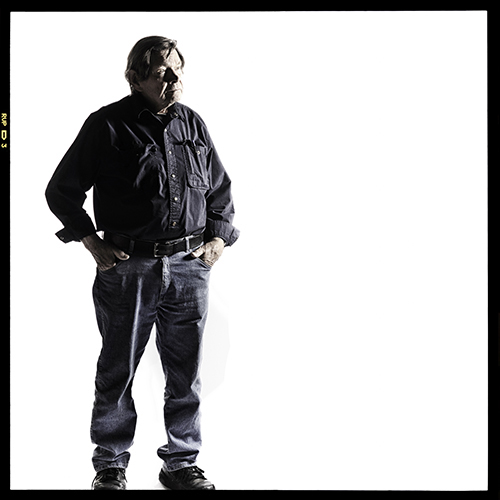
Harry Leippe
Las Vegas, N.M. — Former Highlands University fine arts professor and renowned sculptor Harry Leippe will be honored at the Summer Alumni Reunion June 27.
The distinguished emeritus professor and longtime Las Vegas resident will be recognized at the alumni dinner at 6 p.m. in the ballroom of the Student Union Building at the northwest corner of National Avenue and 8th Street.
Leippe’s 28-year tenure at Highlands began in 1962, during the university’s visual arts renaissance.
Elmer Schooley was the chairman of the Arts and Crafts Department when he hired Leippe to teach sculpture and build a bronze art foundry at Highlands.
“I discovered that this old railroad town could provide everything necessary to build a bronze foundry. I just had to find it, and I did. My students helped,” Leippe said.
Along with Schooley, who was a painter, Leippe became part of a dynamic, storied Highlands art faculty that included Ray Drew, another painter, and Paul Volckening, a potter.
Leippe also taught classes like 3D design, metalsmithing, calligraphy, and art history. In the ’70s and ’80s, he was chairman of the Art Department at different times.
His story begins in 1926 when Leippe was born Gillroy, California, south of San Francisco. He grew up on a farm with an apple orchard and attended a one-room school.
At 18, Leippe enlisted in the Navy for World War II. He was a sonar man, 1st Class, on an anti-submarine escort ship about 200 miles off the coast of Tokyo when Hiroshima was bombed on August 6, 1945.
After the war, Leippe finished high school and enrolled in college on the GI Bill®, earning his B.A. in Greek literature at Calvin College in Michigan, where he also took art classes.
As a young sailor, Leippe befriended a family that introduced him to the Baptist faith and encouraged him to become a minister. After college, Leippe started school at the Southwest Baptist Theological Seminary in Fort Worth, Texas before transferring to a seminary in Berkeley, California.
“During my final semester at seminary, I took a street evangelism class, which I hated. I decided to do God a favor and returned to art,” Leippe said.
Leippe earned an M.F.A. in sculpture from the University of California — Berkeley in 1960.
“I took a sculpture class at Berkeley, and it was the first time I found something I really wanted to do. It was a eureka moment for me, and I loved it,” Leippe said
As a Fulbright scholar, Leippe studied ancient bronze casting processes for three semesters in Florence, Italy. He also had the opportunity to travel, studying and photographing ancient Greek Doric temples in Sicily and the flying buttresses of medieval churches on the coast of France.
“I like bronze because about 6,000 years ago people developed bronze casting, and it is part of the rise of civilization. The metal itself is also attractive and permanent,” Leippe said.
He has shown his work in art exhibitions from New York City to San Francisco, with international commissions such as the French Ministry of Culture.
After his Fulbright, Leippe returned to Berkeley where he taught sculpture. He also designed and built the first bronze foundry at an American university. A Berkeley professor told him about a sculpture faculty position at a small university called New Mexico Highlands.
Leippe joined Schooley, Drew and Volckening on the art faculty, happy to have permission to teach without a tie.
“By chance, the four of us got along well and were friends. There were no fights over who would teach the 8 a.m. classes. We all agreed that a work of art has three primary attributes — subject, form and content, the reason for making it,” Leippe said.
He recalls how Burris Hall was always crowded with art students in the ‘60s, with 200 — 300 art majors and minors during these peak years.
“Quite a few people think that the 1960s were a golden age at Highlands, and the university stationery even said, ‘The Fine Small University of the Southwest.’ The 1960s were the best 10 years of my teaching career, and much better than teaching at Berkeley,” Leippe said.
His teaching style was to give the assignment at the beginning of class and then let his students begin their work without interfering.
“Later in class, I’d ask students individually what they thought about their piece and have a friendly conversation. I avoided the words good, better and bad — instead saying, ‘This is a little more successful than that.’
“Input from the students was what was most rewarding for me as a teacher. Some of my best students were from small Northern New Mexico communities like Villanueva and Mora,” Leippe said.
He remembers how Schooley expected the art faculty to have work in progress in their classrooms for students to see. Schooley also encouraged the faculty to take part in important juried art exhibitions.
“Many of our pieces sold at these shows,” Leippe said.
Today, Leippe continues to cast bronze sculptures in the Highlands art foundry and the Shidoni foundry in Tesuque, New Mexico, with a focus on fantasy structures based on ancient Southwestern architecture.
For more information about the Summer Alumni Reunion, contact the Alumni Office at 505-454-3248 or visit http://nmhufoundation.givezooks.com/events/2014-summer-reunion.
